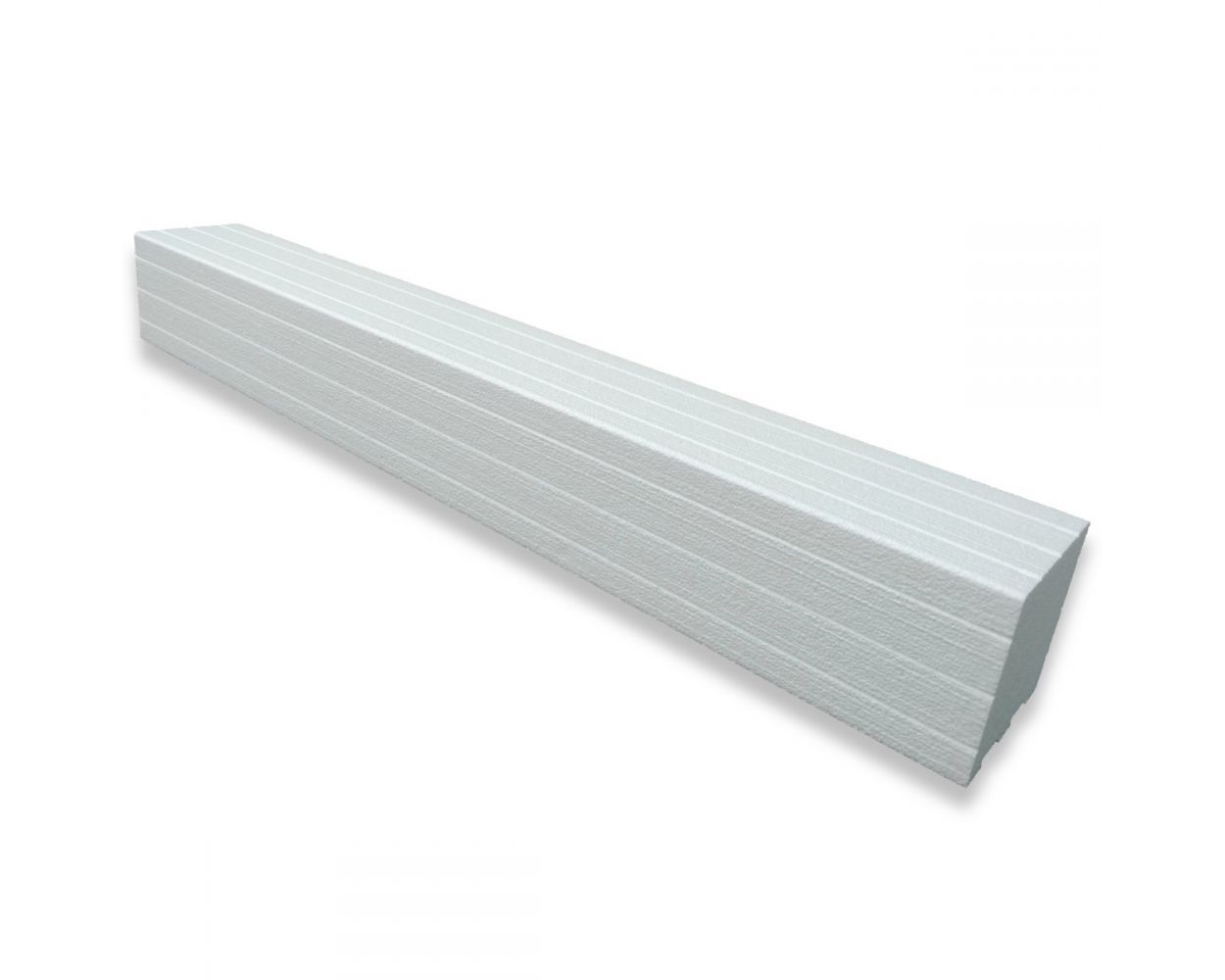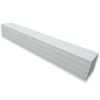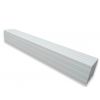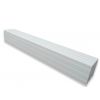How To Build a Shower Curb
As low as $51.79 Regular Price $79.67
In stock
Let us show you how to build a shower curb. They are typical aspects in personalized wet-areas and connect into the wet-area pan itself so that everything is capable and entirely water resistant of standing up to continuous exposure to wetness and usage. Shower curb serve as the border between the flooring of the wet-area pan and the restroom flooring. They keep water in the wet-area, and often also act as a base for installing brackets for a wet-area door.
If you are dealing with top of a concrete piece that has currently been prefloated for the slope of a pan, cinder block and concrete mortar provide a strong base. Wet-area barriers on top of a wooden subfloor, on the other hand, usage wood as the basis for the kind of the barrier. Generally, wooden barriers make use of lengths of two-by-four lumber reduced to the width of the wet-area opening. Nails or screws install the very first board to the subfloor, then 2 or three more lengths are nailed/screwed onto the very first one. Barriers can be as big as you desire, so any size of wood applies to produce the standard kind, as long as it is solid.
Liner
Block curb are just painted over with a layer of latex waterproofing, however wooden barriers are covered and covered with the very same versatile pan liner that covers the wooden subfloor and preliminary presloped concrete. When you measure for the pan liner to be set up on the floor of the wet-area pan, it should cover 6 to eight inches up the walls where the concrete board or wall panels will cover it. As you wrap the liner from the wall to the barrier, cut it with an utility knife for the "flap" to wrap up over the fold and leading across the outer face of the barrier.
As soon as the liner remains in location, wrap the barrier with wire mesh to create a base to which the mortar of your tile/natural stone installation can adhere, given that it can not stick to the plastic liner. Wire mesh is cut down to size with tin snips or metal shears, and is then folded over the barrier so that it slides over the top of the liner. Staple the mesh just to the face of the barrier, down along the bottom edge, near the floor. The rest of the wire mesh must be bent and folded in such a method that it fits comfortably over the barrier. That method, when you drift 2 to 3 inches of concrete deck mud onto the wet-area pan floor, the mud will lock the within the wire mesh firmly versus the pan liner without breaking the liner's water resistant barrier.
Scratch Coat
Before you can install any sort of surface material on top of the barrier, you first have to develop a base to which the adhesives can stick. Generally, you can utilize the very same deck mud utilized for the floor of the wet-area pan. After it hardens, it supplies a base for you to then install the surface material over the top of the barrier.
Wet-areaing without soaking the entire bathroom floor boils down to the ever-important barrier. Understanding how to build a wet-area barrier and what items to use can get complicated. Getting the barrier right makes all the distinction for a wet-area-- and may conserve you thousands of dollars down the roadway.
A wet-area barrier must be no greater than any stair riser in your house. It must be low enough to step over and look smooth, however high enough to keep water out. Many states need that the wet-area barrier is at least 2 inches greater than the drain, but these measurements can be modified if constructing a wet-area for a handicapped person.
Here are some points to bear in mind when developing a barrier for your new wet-area.
It's hard to see in pictures, curb require to be tilted towards the wet-area so they drain effectively.
Idea: When dealing with natural stone, avoid drilling glass door hinges into the barrier since that can trigger leaks. Make sure that your installer drills just through the tile and not the wet-area barrier's waterproofing if you're stuck without an alternative.
A hand made how to build a shower curb in layers around a shower drain assembly.
Wet-area Pan Layers in Steps:
1. Frame wet-area walls, barrier and add wall blocking to develop wet-area base "box".
2. Set up wet-area drain assembly (if not currently installed).
3. Cover wet-area base with home constructers felt (a.k.a. asphalt saturated felt or tar paper).
4. Load the very first mortar base layer (sloped from walls and suppress to drain pipes base).
5. Layer a waterproof barrier on top of first mortar layer and run up wet-area walls-- usually a wet-area liner sealed and clamped to drain (this barrier should be sloped back to the drain).
6. Load top mortar over the wet-area liner (sloped from walls and suppress to drain).
7. Tile surface the top mortar layer
.
Developing a mortar wet-area pan is a relatively simple task of assembling these layers. It will take a little time and some work, but the reward will be a long lasting, leak-free, long lasting wet-area base.
A brand-new shower constructed with a mortar wet-area pan, concrete backer board and tile is heavy. Before you start, make sure that you have appropriate sub-flooring, framing and suitable wet-area drain in place.
The wet-area barrier, while short in stature, has a really crucial task, it keeps the build up of water during typical and non-normal usage inside the wet-area area and out of the outside bathroom. Usually, the minimum height of your wet-area barrier is 2 inches above the wet-area drain, this safeguards from an overflow. Your style, structure, and finished wet-area barrier will depend on a variety of aspects.
Frame.
The wet-area barrier frame can be constructed of multiple 2 × 4 wood pieces to accommodate the entire entryway of the wet-area area. To reach a minimum height of 2 inches above the wet-area drain, you would require a total of (2) stacked 2 × 4 wood pieces to reach a total height of 3 inches, with 1 inch readily available for the installation of your pre-slope, top layer, and wet-area floor tile. There are also pre-manufactured wet-area barriers that can be purchased and customized to your precise wet-area location entryway measurements.
Structure.
While a strong wood frame will appear to be a strong structure for your wet-area barrier, it still requires support to ensure the stability of the whole barrier serves it's purpose of keeping water inside the wet-area location. There are lots of schools of thought as to how to offer structure to the wet-area barrier, some are confident enough in modern constructing innovations to adhere backer board onto the barrier as a final preparation for tile installation.
Prior to you supply structure to your shower barrier, you require to apply your waterproofing approach, sometimes called a water resistant barrier. Prior to starting your bathroom remodel, you picked a waterproofing technique that consisted of a water resistant barrier that will be brought onto your wet-area barrier. Water resistant barriers been available in lots of types and applications, under a basic waterproofing application, the wet-area barrier is secured to the wood or concrete slab flooring, then the water resistant barrier is applied inside the wet-area area, up and over the wet-area barrier. The water resistant barrier can consist of a pan liner, which is made of a single PVC product, an asphalt and felt paper combination, which is frequently called a hot mop, or a sheet membrane, which is a product that is cut to size and at the joints they are mud packed. There is likewise a liquid membrane, which is painted or rolled onto the wet-area barrier, but in this case you would need to have a paintable, ideally a flat surface area currently constructed, such as a backer board or cement over the barrier.
Cement Over Barrier
Taking into consideration the waterproofing method that you have selected and set up over the wet-area barrier, a wire mesh is formed over the waterproofing and across the totality of the barrier. With the mesh formed over the wet-area barrier, a cement scratch coat is used to the mesh to form the outside of the wet-area barrier.
Backer Board Over Barrier
Another choice for finishing the structural stability of your wet-area barrier would be to set up backer board over the barrier. More about curbs If your choice as a base for your tile setup is going to be a backer board, then the most safe way to adhere it to the wet-area barrier would be to screw through the water resistant barrier. The least quantity of screws used on the interior of the wet-area suppress the much better and they must never be less than 2 inches from the height of the wet-area drain.
As a resident, constructing a customized wet-area pan can increase the value of your house. It provides a distinct appearance and perfectly incorporates the wet-area base to your restroom floor.
Products
* Specification Mix Preblend Dry Mortar (cement and sand mix) x 2 bags
* Thin-set
* (2) 2x4" x8ft lumber board (to construct wet-area barrier).
* 1/2x1" x7ft boards (to use as wet-area door design).
* Tile and bullnose tile (for wet-area barrier).
* Mosaic tile for wet-area flooring.
* Grout.
* Tile caulk (matching grout color).
* liquid waterproofing barrier (Redgard likewise works well).
* 4" Screws.
* 1" Nails.
Tools.
* Slice saw.
* Hammer.
* Protractor.
* Margin trowel.
* Level.
* Pencil.
* Non reusable paint brush.
* Little foam roller.
* Pail.
* Wet rag.
The primary objective is to create a totally water resistant sloped flooring, with a drain, raised edge frame, and pretty mosaic tiles to cover everything up.
1. You must have your wet-area enclosure measurements prior to you begin constructing your wet-area pan. In my case, I'm building a wet-area pan for a 40" neo-angle wet-area enclosure, which includes 2 glass panels and 1 glass door.
2. Using the 1" x2" boards, produce a design representation of your wet-area door/panels.
3. Once it looks right, tape the boards down to secure them.
4. The wet-area barrier width ought to have to do with 3-4" large. Step and mark the guides so the wet-area doors sits near the middle of the barrier.
5. Draw the overview of your wet-area barrier. This will be the measurements of the mold you will construct for your concrete barrier. Take your 2x4s mark and cut the them to the size of your frame.
6. Utilizing the protractor, step and mark the needed angles to cut your external and inner wet-area frame.
7. Chop the ends of 2x4s to the marked angles.
8. Put together the wooden frame (with both outer and inner edges) for your wet-area barrier.
9. Get rid of the little boards that were taped down. Ensure the width of the barrier is still 3-4".
10. Using the small boards, cut, then nail them together to secure your frame.
11. Drill screws into the flooring (backerboard) at every joint and about every foot. As soon as the mud is poured and cured, these screws will help protect the barrier to the floor.
12. Your frame is completed and now is prepared for the mud.
13. Mix mortar with water according to label instructions.
14. Gather the mud and stir it to prevent air pockets.
15. Continue filling out the frame up until it reaches the top of the 2x4s. Attempt to make the leading as level as possible. The glass wet-area doors will need to be sitting on a flat leveled surface.
16. After 24 hr, your barrier needs to be hard enough to take apart the frame.
The top of your wet-area drain must be 2" above the flooring. Draw a line along inner the perimeter of the barrier and along the wet-area walls at 2 3/4" above the flooring.
19. Pour mud into the pan. Using the marginal trowel, mix mud thoroughly to make sure no air bubbles.
20. Using the level, measure every 5 degrees to make sure all sides are sloping towards the drain.
21. Smooth out any fractures or bumps in the wet-area pan. Include more mud (if needed) to compare with the 2 3/4" guide line then smooth the mud out and when again, using the level to guarantee the perimeter is sloping towards the drain. Wait 3 days for the mud to totally treat before waterproofing.
Suggestion: To ensure there are no holes, bumps or fractures, switch off lights and shine a flashlight horizontally throughout the flooring. If there are any flaws, you will see shadows.
After the concrete has actually cured, it's time for waterproofing! To waterproof the wet-area pan, start by painting the border, corners, and nooks. Clean any excess waterproofing off with a wet rag.
Keep in mind: The image above exposes one of our mistakes. We were expect to develop the pan before we tiled the walls. To guarantee an appropriately water resistant wet-area base, you need to paint the waterproofing liquid at least 3ft up the walls so that water does not get under the tiles and onto the wood subfloors.
23. Permit the Aquadefense to dry totally (and turn dark green).
24. Now "dry lay" the tiles to ensure tiles will fit into the wet-area flow with no uncomfortable slivers and cuts. If the tiles are sloping towards the drain.), (The pet dogs likewise really want to understand.
Make sure to utilize little mosaic tiles on the wet-area floor. Mosaic tiles are simpler to develop a gradual slope without it being too noticeable.
Tip: Beware not to puncture the waterproofing when using thinset and tile. Re-apply Aquadefense and wait till it totally dries before applying tile if you do.
26. Carefully caulk the drain to guarantee its area is completely sealed.
27. Caulk along the corners and every "modification of aircraft." This includes where the barrier satisfies the small wet-area floor tiles, where the barrier fulfills the large restroom flooring tiles, and where the little mosaic tiles fulfill the subway wall tiles.
2 8 hour days plus treating time of 3 days.
Keep in mind: Please take the extra actions to effectively set up the drain and all required waterproofing which I don't totally cover in this tutorial. An effectively sealed and water resistant wet-area base will ensure your subfloors and joists are safe from water damage and mold.
| Features | TruCurb Shower Curb. Made of high density lightweight expanded polystyrene for the constructing shower dams. TruCurbs are specifically designed to intergrate with Trugard Standard TruSlope center drain trays, linear drain trays and the Trugard Steam and Waterproof membrane. There are 4 available sizes
|
|---|





